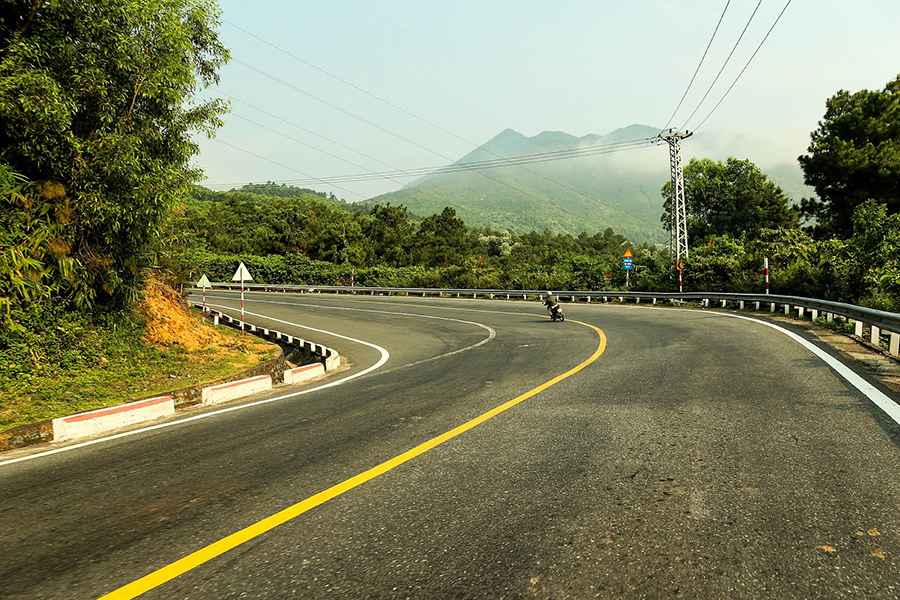The Most Dangerous Roads in Asia
Since their appearance, roads have become an important part of civilization and have forever changed the way we live. Today, they have become a complex web of highways and country roads that connect countries and people. You might already have guessed that the busiest roads and most complicated connections are located in Asia.

Together with the enormous number of road users, it led to some of the most dangerous roads in Asia. Let's take a look at the local highways and routes that make the driver's blood boil when driving there with AutoBidMaster repairable autos.
The Karakoram Highway, China – Pakistan
This route, which connects Pakistan and China and is also known as the Friendship Highway, was recognized as the world's longest paved highway. Its construction took more than a quarter-century and claimed the lives of hundreds of workers from both countries. Today, the Karakoram Highway has become a symbol of the diplomatic relations established between two countries.
At the same time, driving on this road requires extensive courage from drivers. At an elevation of 15,400 ft (4.69 km), the Karakoram route is also the highest mountainous international highway. Some stretches of this roadway, where the path narrows and cars' wheels hang off cliffs, have been designated as the most dangerous in the world, especially in winter when it's extremely slippery to drive.
Zoji La Pass, India
Although it's a risky and rocky path in northern India that reaches over 11,500 ft (3.51 km) above the sea, this one is vital for proper transportation and local life. The roadway connects the Ladakh province to Kashmir as well as the western Himalayan mountain ranges. So, local inhabitants use this important pass to transport their goods to reach the nearest market or other critical facilities. At the same time, you can also find tourists there exploring the mountain area and searching for blood-chilling adventures.
It frequently snows here in the winter, and special cleaning equipment cannot cope with it. So, when you're on the snowy Zoji La Pass, be ready to find huge ice walls that hang over both sides, threatening to fall down at any moment.
Even in the summer, when the pass is not covered in snow, officials don't encourage driving here in passenger cars without all-wheel drive systems or with drivers who have doubts about their capabilities. It's really easy to lose control of the automobile there, so special attention is required any time a driver decides to conquer the route.
Nanga Parbat Pass, Pakistan
This Himalayan automotive route is a high-altitude road that is frequently described by the media as one of the most dangerous in the world. The Karakoram Highway, which is a part of the mountain pass, goes for more than 10 miles (ca. 16 km) through the way at an elevation of 10,800 ft (3.3 km) above sea level.
The most dangerous area of the Nanga Parbat Pass is a 6-mile stretch with no barriers, so only your own steadiness keeps you from falling down. To make matters worse, the road is blocked during the winter by heavy snowfalls, which significantly increase the risk for drivers. All these points make the route one of the most dangerous in Asia, and this fact is also admitted to locals who drive there regularly.
Leh-Manali Highway, India
The highway runs through the Himalayan mountain range in northern India, connecting the cities of Leh and Manali. The average elevation of The Leh-Manali motorway reaches over 13,125 ft (around 4 km), with the highest point being Tanglang-La Pass at 17,400 ft (5.3 km).
Weather disasters frequently occur in this area, resulting in road movement stopping. Sometimes dangerous and powerful avalanches come down from the slopes, threatening to bury visitors under tons of stones and snow. Due to inclement weather, the route is only open four months out of the year.
Despite its length of nearly 310 miles (500 km), the Leh-Manali roadway is devoid of habitation. It makes already-dangerous driving there even more threatening. As a result, drivers should take extra precautions to prepare for the trip, including not just water and food but also a supply of fuel.
The Bottom Line
If you decide to visit Asia, thorough planning is a must for an exciting journey. This also relates to carefully choosing automobile routes and highways. Some of them may be extremely complicated due to mountain terrain and difficult weather conditions. Thus, traveling Asia's most risky roads requires not just driving talent and expertise but also an unshakable determination to overcome the odds. With their dizzying heights, abrupt bends, and unpredictable circumstances, these roads can excite travelers with the beauty of the surrounding landscapes and scare drivers at the same time. So, it's important to remember the significance of responsible travel to ensure safer journeys.